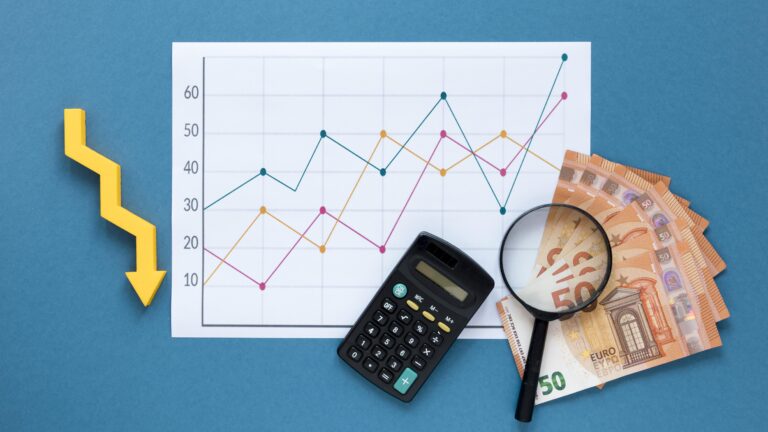The concept of supply and demand is a fundamental principle in economics that affects everything from the price of goods to the stability of entire economies. When supply and demand are balanced, economies tend to thrive, fostering growth, stability, and prosperity. However, in certain situations, imbalances can lead to inflation, unemployment, and economic instability. Understanding the relationship between supply and demand and its impact on economic stability is crucial for policymakers, businesses, and consumers alike.
According to History Channel – Great Depression, during the Great Depression, there was a massive demand drop and oversupply in various sectors which led to a severe economic downturn, skyrocketing unemployment, and deflation. The Great Depression was a 1-year severe worldwide economic downturn that caused a dramatic decrease in consumer and business spending where lower prices led to reduced revenues and wages, worsening the unemployment crisis and further exacerbating the economic decline just as factories and farms were producing more goods than could be sold, resulting in oversupply and plummeting prices. The lack of demand and oversupply created a deflationary spiral. The Great Depression highlighted the critical importance of balanced supply and demand in maintaining economic stability.
In this blog post, we will explore five significant effects of supply and demand balance on economic stability and why maintaining this equilibrium is essential for a healthy economy in any country in the world.
Key Takeaways
- Supply and demand balance, or market equilibrium, represents the point where the intentions of buyers and sellers converge, resulting in a stable price and quantity for a particular product or service.
- Understanding supply and demand dynamics is crucial for policymakers to formulate effective economic policies.
Table of Contents
Introduction to Supply and Demand Balance (Market Equilibrium)

Supply and demand balance, often referred to as market equilibrium, is a fundamental concept in economics that serves as the cornerstone of how prices are determined in a market economy. Simply put, market equilibrium represents a state of balance between the quantity of goods or services supplied by producers and the quantity demanded by consumers at a given price level.
In a perfectly competitive market, where numerous buyers and sellers interact freely, supply and demand forces work together to establish an equilibrium price and quantity for a particular product or service. This equilibrium point is where the intentions of buyers and sellers align, resulting in neither excess supply nor excess demand.
Understanding Supply and Demand
Supply refers to the quantity of a good or service that producers are willing and able to offer for sale at various price levels during a specific period. The law of supply states that as the price of a good or service increases, the quantity supplied by producers also increases, ceteris paribus (all other factors held constant), and vice versa.
On the other hand, demand represents the quantity of a good or service that consumers are willing and able to purchase at different price levels during a specific period. According to the law of demand, when the price of a good or service decreases, the quantity demanded by consumers increases, and conversely, as the price rises, the quantity demanded decreases.
Importance of Market Equilibrium
Supply and demand balance, or market equilibrium, is a fundamental concept in economics that represents the point where the intentions of buyers and sellers converge, resulting in a stable price and quantity for a particular product or service. Understanding market equilibrium is essential for comprehending how prices are determined in markets and how resources are allocated efficiently to meet consumer demand.
Market equilibrium plays a crucial role in allocating resources efficiently in an economy. It ensures that resources are allocated to their most valued uses by guiding producers to supply goods and services according to consumer preferences and demands. Moreover, market equilibrium facilitates price stability, as any deviation from equilibrium prompts market forces to adjust prices and quantities, maintaining balance in the market.
Why Does Supply and Demand Balance Matter?
Supply and demand balance (market equilibrium) is of paramount importance in the marketplace and within the field of economics due to its significant implications for market efficiency, resource allocation, price determination, and overall economic stability. Here are several reasons why supply and demand balance matters:
1. Efficient Resource Allocation
Supply and demand balance ensures that resources are allocated efficiently to their most valued uses. When supply and demand are in equilibrium, resources are allocated optimally based on consumer preferences and producer capabilities.
2. Price Determination
Market equilibrium establishes the equilibrium price, which reflects the point at which buyers and sellers agree on a fair exchange value for goods and services. This price signals to producers how much to produce and to consumers how much to consume.
3. Market Stability
Maintaining supply and demand balance fosters market stability by minimizing fluctuations in prices and quantities. Excessive surpluses or shortages can lead to market disruptions, price volatility, and inefficiencies.
4. Economic Growth and Development
A well-functioning market with balanced supply and demand promotes economic growth and development by encouraging investment, innovation, and entrepreneurship. Stable market conditions provide a conducive environment for businesses to thrive and expand.
5. Consumer and Producer Welfare
Supply and demand balance ensures that consumers have access to the goods and services they desire at reasonable prices, while producers receive fair compensation for their efforts. This leads to improved consumer welfare and producer profitability.
6. Incentives for Innovation
In a competitive market with supply and demand balance, firms are incentivized to innovate and improve products to gain a competitive edge. This dynamic drives technological advancements and enhances consumer choice and satisfaction.
7. Policy Implications
Understanding supply and demand dynamics is crucial for policymakers to formulate effective economic policies. Policies that distort supply and demand balance, such as price controls or subsidies, can lead to market inefficiencies and unintended consequences.
8. Economic Indicators
Supply and demand balance serves as a key indicator of overall economic health. Deviations from equilibrium may signal underlying imbalances in the economy, such as inflationary pressures or recessionary conditions.
9. International Trade
Supply and demand balance influences patterns of international trade by determining comparative advantages and export opportunities for countries. Understanding global supply and demand dynamics is essential for participating effectively in international markets.
10. Consumer Confidence
Market equilibrium contributes to consumer confidence by providing stability and predictability in prices and market conditions. High consumer confidence encourages spending and investment, driving economic activity.
Read also: 10+ Important Strategies for Mastering Supply and Demand Practice in Market Economies
How to Find & Calculate Equilibrium Price
Finding and calculating the equilibrium price involves identifying the point where the quantity supplied equals the quantity demanded in a market. This can be achieved graphically or algebraically, depending on the data available and the complexity of the market.
Here are the general steps to find and calculate the equilibrium price:
Graphical Method
1. Plotting Supply and Demand Curves
Begin by plotting the supply and demand curves on a graph, with price on the vertical axis and quantity on the horizontal axis. The supply curve typically slopes upwards from left to right, while the demand curve slopes downwards.
2. Identifying Intersection Point
Locate the point where the supply and demand curves intersect. This intersection represents the equilibrium point where the quantity supplied equals the quantity demanded.
3. Determining Equilibrium Price
Once you’ve identified the intersection point, read the corresponding price level on the vertical axis. This price level is the equilibrium price.
Algebraic Method
1. Supply and Demand Equations
If you have equations representing the supply and demand curves, set them equal to each other to find the equilibrium price.
Example:
Demand: (Qd = a – bP)
Supply: (Qs = c + dP)
Equate (Qd) and (Qs) and solve for (P) to find the equilibrium price.
2. Solving for Equilibrium Price
Once you’ve set the supply and demand equations equal to each other, solve for the price variable to find the equilibrium price.
Criteria for Equilibrium
1. Quantity Supplied Equals Quantity Demanded
At equilibrium, the quantity supplied (Qs) by producers must equal the quantity demanded (Qd) by consumers: (Qs = Qd).
2. Market Clearing
Equilibrium price is the price at which there is neither excess supply nor excess demand in the market.
3. Stable Equilibrium
The equilibrium point should be stable, meaning that if the price deviates from equilibrium, market forces will act to return it to the equilibrium level.
Considerations When Calculating for Market Equilibrium
1. Market Information
Accurate data on supply and demand quantities and prices are essential for calculating equilibrium.
2. Market Dynamics
Markets can be complex, and factors such as government interventions, external shocks, and changes in consumer preferences can affect supply and demand.
3. Graphical Approximation
In some cases, finding an exact equilibrium price algebraically may be challenging, and a graphical approach provides a visual approximation.
By following these steps and considering the criteria for equilibrium, you can find and calculate the equilibrium price in a market. However, it’s essential to recognize that equilibrium is a dynamic concept, and market conditions may change over time, necessitating continual monitoring and adjustment.
What are Market Forces?
Market forces refer to the interplay of supply and demand in a market economy, which determines the prices of goods and services and allocates resources efficiently. These forces arise from the decisions of buyers and sellers as they interact in the marketplace.
Market forces include both demand-side factors, driven by consumer preferences and purchasing power, and supply-side factors, influenced by producer decisions and production capabilities. Here’s a breakdown of market forces:
Demand-Side Market Forces
1. Consumer Preferences
Changes in consumer tastes, preferences, and lifestyle trends can significantly impact demand for certain goods and services. For example, increased health consciousness may lead to higher demand for organic foods and fitness-related products.
2. Income Levels
Rising incomes generally lead to increased consumer spending and higher demand for goods and services. Conversely, economic downturns or income inequality may reduce purchasing power and dampen demand.
3. Population Changes
Shifts in population demographics, such as aging populations or population growth in certain regions, can alter demand patterns. For instance, an aging population may increase demand for healthcare services and retirement-related products.
4. Price Elasticity
The price sensitivity of consumers affects demand. Inelastic goods, such as essential medications or utilities, have relatively stable demand regardless of price changes. Elastic goods, such as luxury items or non-essential services, experience more significant demand fluctuations in response to price changes.
Supply-Side Market Forces
1. Production Costs
Factors like raw material prices, labor costs, and technology influence production costs for businesses. Higher production costs can reduce supply, while lower costs may increase supply.
2. Technological Innovation
Advances in technology can enhance production efficiency, reduce costs, and expand output capacity, leading to increased supply. For example, automation and robotics have revolutionized manufacturing processes, boosting productivity.
3. Government Policies and Regulations
Regulations, subsidies, taxes, and trade policies set by governments can impact production and supply. For instance, environmental regulations may impose additional costs on businesses, affecting supply levels.
4. Resource Availability
The availability of resources, including natural resources, skilled labor, and capital, affects production capacity. Changes in resource availability due to factors like depletion or discovery can influence supply dynamics.
Market Equilibrium and Price Formation
Market forces interact to establish market equilibrium, where the quantity supplied equals the quantity demanded at a specific price level. Equilibrium price reflects the point where buyers and sellers agree on a fair exchange value for goods and services, ensuring market clearing. Any deviation from equilibrium prompts market forces to adjust prices and quantities, restoring balance.
Understanding market forces is essential for businesses, policymakers, and consumers to anticipate market trends, make informed decisions, and adapt to changing economic conditions. By analyzing the interplay of supply and demand factors, stakeholders can better navigate the complexities of market dynamics and optimize resource allocation.
5 Important Effects of Supply and Demand Balance on Economic Stability
1. Price Stability
Price stability is a cornerstone of economic stability, achieved when the forces of supply and demand are in balance. This equilibrium ensures that the quantity of goods and services supplied by producers matches the quantity demanded by consumers at a specific price level.
In practical terms, it means that there are neither excess goods nor shortages in the market, leading to consistent and predictable prices for consumers and businesses alike. For businesses, stable prices reduce uncertainty in production costs and revenues, facilitating long-term planning, investment decisions, and pricing strategies.
Similarly, consumers benefit from stable prices as it allows them to make informed purchasing decisions without fear of sudden price fluctuations. Overall, price stability fosters economic confidence, mitigates inflationary pressures or deflationary risks, and contributes to sustainable economic growth.
2. Employment Rates
Supply and demand balance directly influences employment levels in an economy. When demand for goods and services aligns with supply, businesses are incentivized to expand production to meet consumer needs. This expansionary phase creates job opportunities across various sectors, leading to lower unemployment rates and increased labor force participation.
Moreover, balanced supply and demand contribute to a healthy labor market characterized by steady job creation and wage growth. A thriving labor market, in turn, enhances consumer confidence and purchasing power, driving further economic activity through increased spending and investment.
Additionally, low unemployment rates reduce reliance on government assistance programs, promote social stability, and foster broader societal well-being.
3. Economic Growth
Supply and demand balance plays a pivotal role in fostering economic growth by encouraging investment, innovation, and productivity gains. When supply meets demand, businesses are motivated to expand production capacity, invest in new technologies, and explore market opportunities, leading to increased output and overall economic expansion.
Sustained economic growth improves living standards, creates job opportunities, and promotes wealth accumulation. Furthermore, balanced supply and demand drive positive feedback loops, where increased consumer spending stimulates demand, leading to higher production levels, additional job creation, and further income growth.
This virtuous cycle of economic growth enhances the capacity of governments to fund public services, invest in infrastructure, and address societal challenges, thereby fostering prosperity and well-being for citizens.
4. Consumer Confidence
Market equilibrium instills confidence among consumers by providing assurances of stable prices, product availability, and overall market conditions. When supply and demand are balanced, consumers feel confident in their ability to access goods and services at reasonable prices, leading to a greater willingness to spend and invest in the economy.
High consumer confidence stimulates economic activity by driving demand for goods and services, which in turn encourages businesses to expand production, invest in innovation, and hire additional workers. This increased consumer spending supports revenue growth for businesses, leading to higher profits, increased investment opportunities, and broader economic expansion.
Additionally, consumer confidence serves as a leading indicator of economic health, reflecting optimism about prospects and contributing to positive sentiment in financial markets and broader economic sentiment.
5. Investment Stability
Balanced supply and demand create a stable investment environment by ensuring that market prices accurately reflect underlying fundamentals and risks. When markets are in equilibrium, investors have confidence that prices are fair and transparent, reducing uncertainty and minimizing investment risks.
Investment stability encourages capital formation, facilitates long-term planning, and supports financial markets’ efficient functioning. Balanced supply and demand are essential for attracting investments across various asset classes, including stocks, bonds, real estate, and commodities.
Moreover, stable investment conditions foster investor trust, encourage capital inflows, and promote economic development by facilitating the allocation of financial resources to productive ventures and growth-oriented projects.
Conclusion
The balance between supply and demand is fundamental to the stability and health of any economy. Achieving and maintaining this equilibrium is not just about finding the right price point for goods and services but ensuring the smooth operation of economic mechanisms that drive growth and prosperity. When supply meets demand effectively, it leads to price stability, which reduces uncertainty for both consumers and businesses. This stability promotes consistent employment rates, providing job security and fostering a robust labor market.
Furthermore, supply and demand balance underpin sustained economic growth by encouraging investment, innovation, and productivity. Consumer confidence thrives in such an environment, leading to increased spending and further stimulating economic activity. Lastly, a stable investment climate, fostered by market equilibrium, attracts capital and supports long-term financial planning and growth.
Understanding and promoting supply and demand balance is crucial for policymakers, businesses, and consumers alike. By ensuring that markets function efficiently and equitably, we can create a resilient economic foundation that supports sustained development and improves the overall quality of life. As we navigate the complexities of the modern economy, the principles of supply and demand balance remain as relevant and vital as ever, guiding us towards a stable and prosperous future.
Frequently Asked Questions
What impact does market equilibrium have on the economy?
At the equilibrium price, there is neither a shortage nor a surplus: the quantity of the good that buyers want to purchase matches the quantity that sellers are willing to supply. Buyers can obtain the amount they desire at the market price, and sellers can sell the amount they wish at the market price.
References
- www.history.com – Great Depression History
- study.com – Market Equilibrium: Supply & Demand | Definition & Examples



